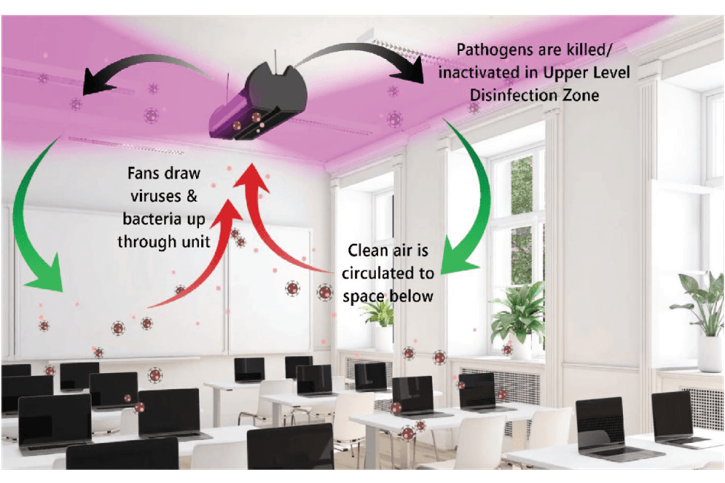
We collect basic website visitor information on this website and store it in cookies. We also utilize Google Analytics to track page view information to assist us in improving our website.
CHAIR believes UV technology is key to cost effective transformation of community and healthcare spaces including schools, hospitals and long term care.
CHAIR recommends a Target Contamination Level (TCL) of <5 CFU / m³ in healthcare spaces.
To achieve this, CHAIR recommends:
.png)


Upper air GUV is the most effective protection against airborne transmission of disease for healthcare and community spaces.
GUV can provide equivalent Air Changes per Hour(eACH) in the order of 10 to 100 to 1000 - fold greater then ventilation alone.
CERN / WHO / ARIA Airborne Risk Calculator links:
https://partnersplatform.who.int/aria
https://partnersplatform.who.int/tools/aria/calculator
CAiMIRA | CERN Airborne Model for Indoor Risk Assessment
CERN Cost-Benefit Analysis of FarUV
Eadie 2022 FarUV Study showing Effective Reduction to “Biologically Clean” level
GUV systems should be installed, commissioned, and serviced only by trained professionals.
For healthcare applications in Canada, see CSA Z8000: 24, Healthcare facilities and CSA Z317.12: 25, Cleaning and disinfecting of healthcare facilities.
In Canada, GUV devices are registered by Health Canada PMRA.
Do you want to learn more about contributing to safe spaces? Take a look at our resources.